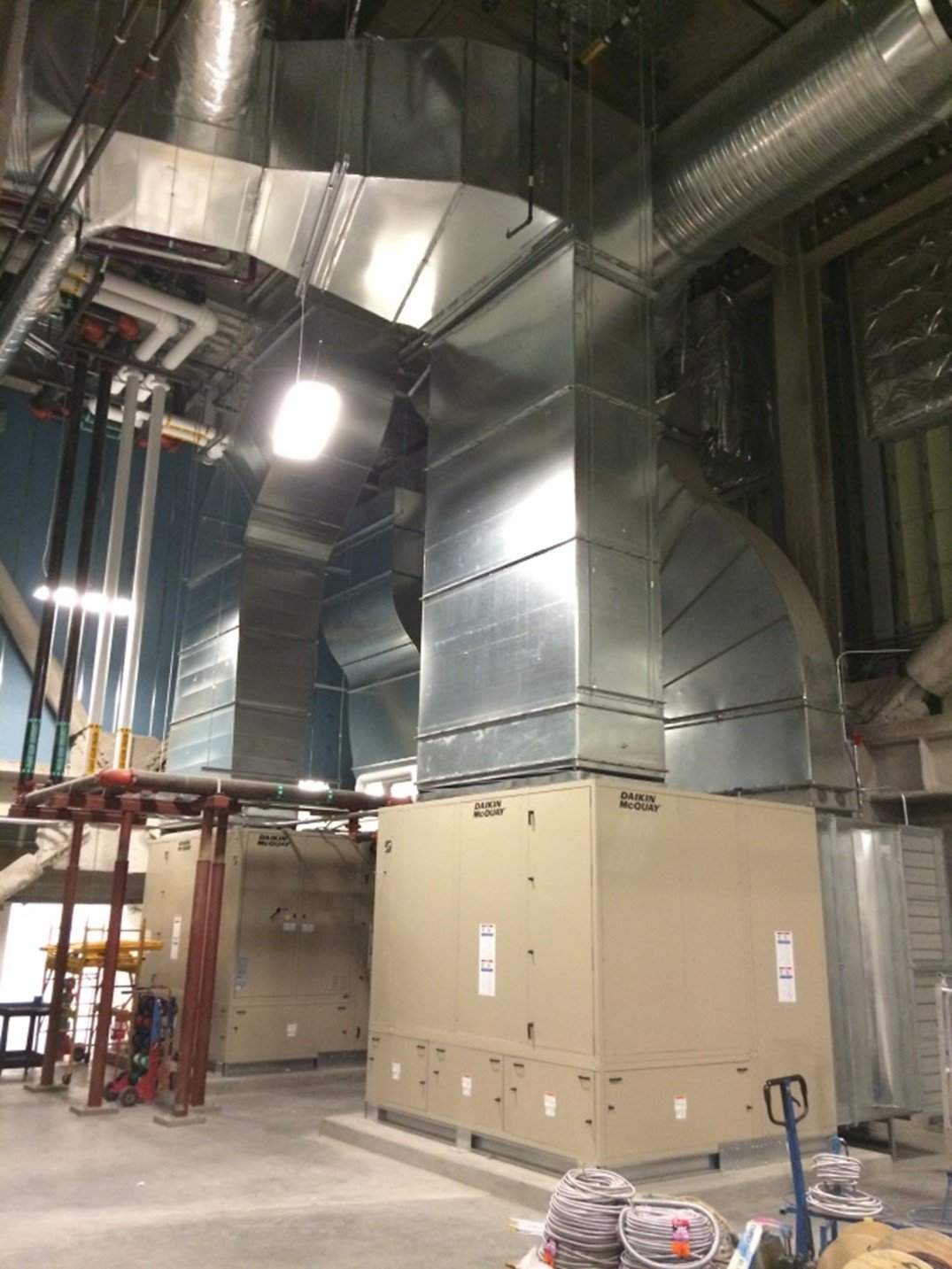Levi’s Stadium
Building a LEED Gold BD&C / EBOM stadium in time for Super Bowl 50
In 2011, Turner-Devcon Joint Venture (TDJV) was authorized to complete a design development (DD) package and “bridging documentation” for mechanical, electrical, plumbing (MEP), and food service bid packages for the new home of the San Francisco 49ers, Levi’s Stadium. The key evaluation point for the HVAC system was the stadium being located in the South Bay vs. San Francisco, which is considered a “micro-climate”. The approved solution was specifying a condenser / tower water system for heat rejection of the packaged air-conditioning units, walk-in food service coolers / freezers, and a high efficient heat pump for the domestic hot water system. The entire HVAC system was specified as variable flow with enhanced controls to optimize the performance and improve energy savings.
Selecting the Right Equipment
Some key evaluation aspects for equipment manufacturers was reliability because of the temporary holding facility, player thermal comfort, and command centers. Since the stadium is in California, the associated energy code, Title 24, compliance was a requirement for the city plan check. Therefore, equipment energy performance was an important element of selection. NSW supplied Daikin equipment to meet both the performance requirements and the schedule timelines.
Upper Concourse ACU Installation
Event Level Mechanical Room
A Successful Start-Up
NSW and Daikin technicians were on-site to verify the packaged air-conditioning unit controls, including interface to the building automation system, firmware updates, and operational settings, for the different HVAC applications. In preparation of the “soft opening” event, early move-in spaces such as the commissary and stadium operations were required for turnover 3 months in advance. As a result, Start-Up and Commissioning efforts begin nearly a year in advance for planning and sequencing purposes to ensure the entire construction and operations teams were synced for a successful delivery of MEP, control, and food service systems. After the inaugural season, the HVAC systems were re-evaluated against the energy model which showed that the Daikin ACU units performed exactly as specified.



